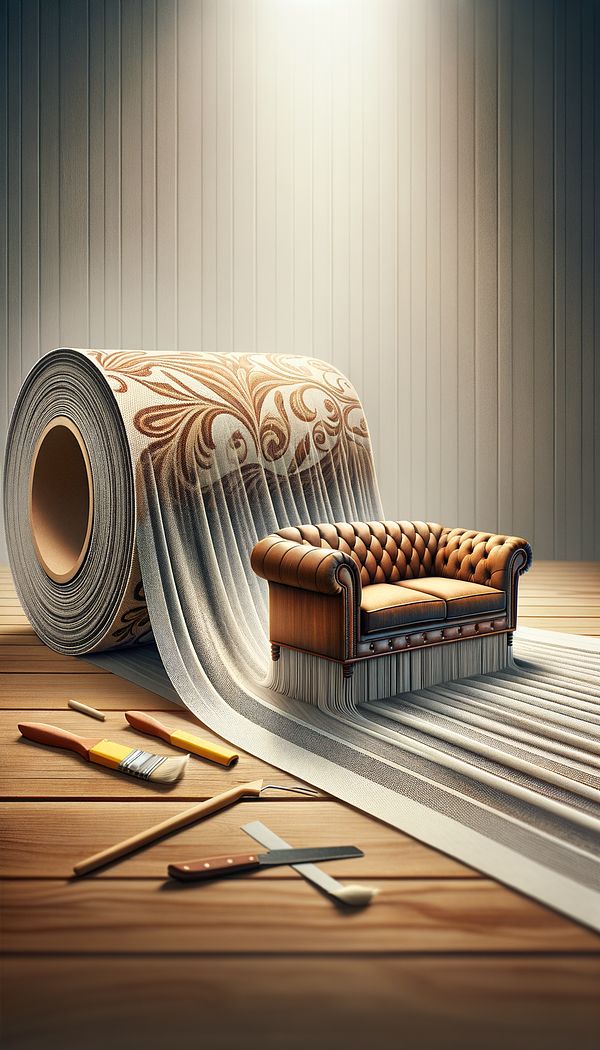What is Railroaded?
Railroaded refers to a method of fabric construction oriented horizontally rather than the traditional vertical orientation.
Description
When we talk about "railroaded" fabric in the world of interior design, we're discussing a method where the fabric is constructed or woven in such a way that its pattern runs across the roll from selvedge to selvedge, as opposed to along its length. This means that the design of the fabric moves horizontally across the piece, offering a continuous flow without interruption for seams or joins. This technique plays a crucial role especially when dealing with large upholstered items, window treatments, and accents where pattern continuity is desired.
The term railroaded comes from the analogy of railway tracks running parallel to the edges of the fabric, signifying the direction of the pattern flow. It's particularly advantageous for applications where large surface areas need to be covered, as it reduces the need for seams that could disrupt the pattern flow or overall aesthetic. Additionally, railroaded fabrics tend to be more efficient for certain types of furniture upholstery, as there's less waste involved when cutting fabric to size.
However, not all fabrics or patterns lend themselves well to being railroaded. Patterns or images that have a clear top and bottom, such as certain florals or landscapes, may not look right if applied horizontally. Therefore, when selecting fabric for a project, it's important to consider whether railroading is appropriate for the application and the desired outcome.
Usage
For example, when upholstering a large sofa, a designer might choose a railroaded fabric to ensure that the fabric's pattern flows seamlessly across the entire piece without interruption. Similarly, when creating custom window treatments for a wide set of windows, using railroaded fabric can allow for a continuous pattern that enhances the room's aesthetic. In commercial spaces, like hotels or restaurants, railroaded fabric is often used for large scale upholstery tasks to maintain design consistency and reduce fabric waste.
FAQs
-
Can any fabric be railroaded?
Not all fabrics are suitable for being railroaded. Fabrics with directional patterns or designs that have a clear top and bottom may not achieve the desired look when applied horizontally. It's important to select fabric specifically designed to be railroaded for optimal results.
-
Why is railroading fabric beneficial?
Railroading fabric can reduce the need for seams, which may interrupt pattern flow on large upholstered pieces or window treatments. It also tends to be more efficient with less waste, making it a cost-effective choice for both residential and commercial projects.
-
How do I know if a fabric is railroaded?
Fabric that is intended to be railroaded will often be specified by the manufacturer or distributor. When selecting fabric, always inquire about its orientation and intended use to ensure it aligns with your project requirements.
Practical Application
When considering the use of railroaded fabric for your next project, begin by reviewing the overall design and layout of the piece to be upholstered or the dimensions of the window to be treated. Look for fabrics that are specifically labeled as railroaded or consult with manufacturers if you're unsure. Keep in mind the pattern or design of the fabric, and ensure it complements the space without requiring unnecessary seams or interruptions. This careful selection will contribute significantly to the cohesiveness and beauty of the final design.
-
Furniture Types599 articles
-
Window Treatments65 articles
-
Materials & Textiles360 articles
-
Textiles & Upholstery252 articles
-
GeorgianGeorgian architecture and interiors denote the styles that were popular in Britain during the reigns of the first four Georges, from 1714 to 1830.
-
AmoriniAmorini are decorative motifs featuring cherubic children, often depicted with wings.
-
FauteuilA fauteuil is a style of open-arm chair with a primarily wooden frame.
-
TraditionalTraditional interior design is a timeless style that emphasizes classic, symmetrical arrangements and rich details.
-
Flemish ScrollA decorative motif featuring a symmetrical scroll with curves that meet in the middle.
